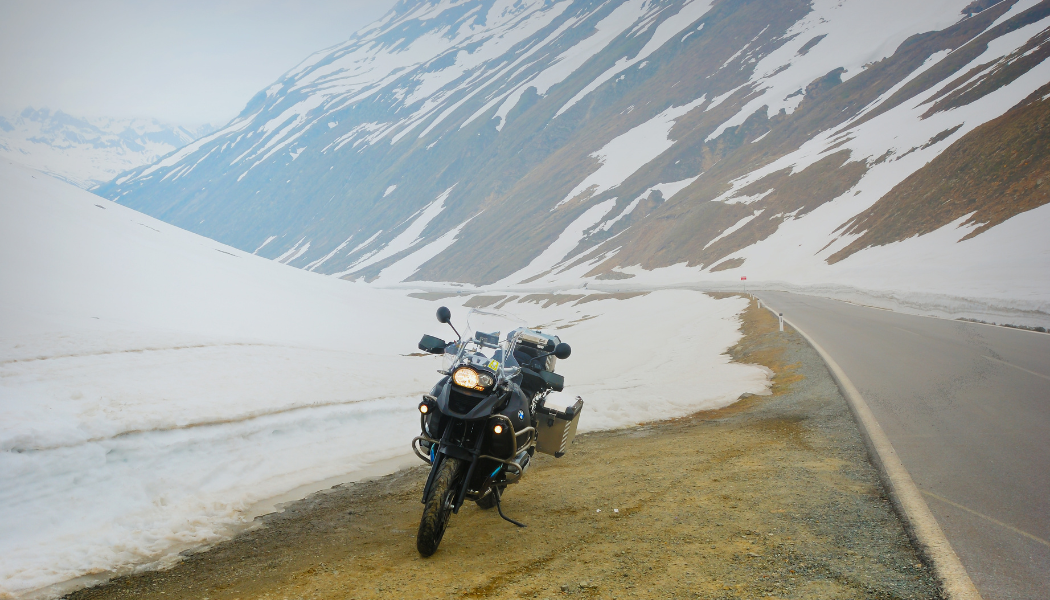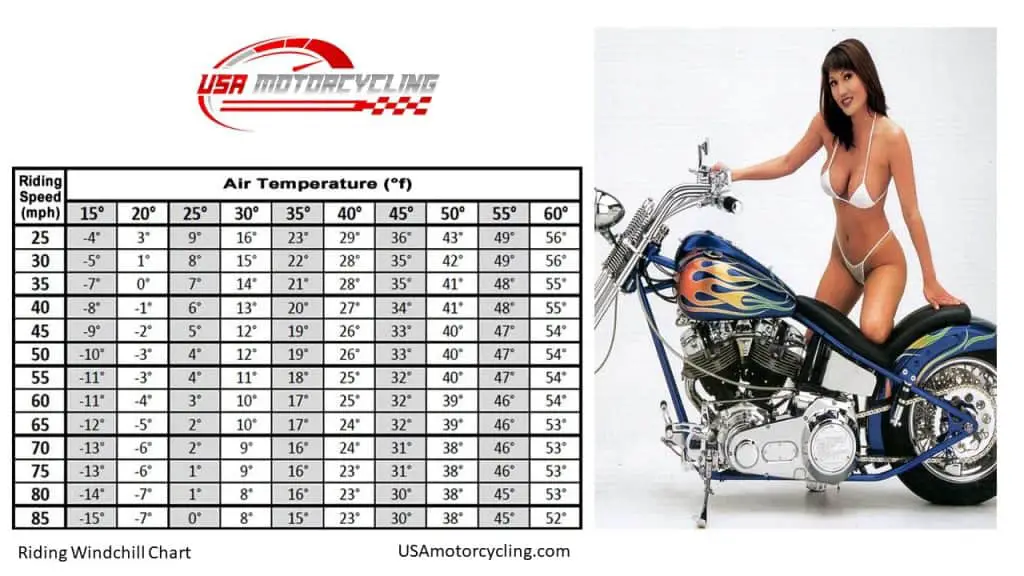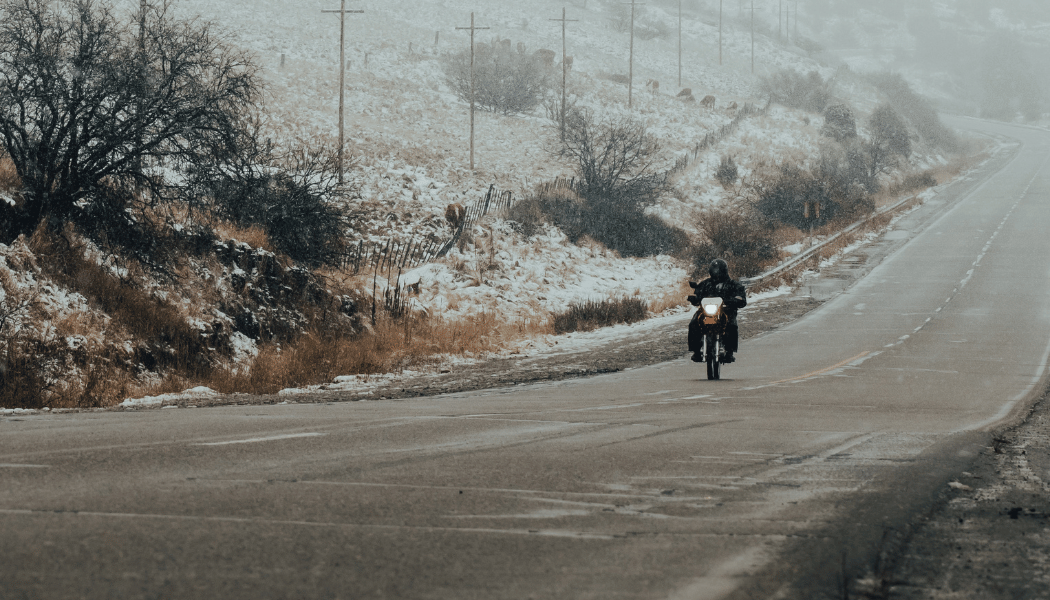If you’re like me, you have a hard time sitting on the sidelines waiting to ride your motorcycle when it’s cold.
Now, there is a limit to when riding in the cold can become unsafe. This is why it’s important to understand how to calculate wind chill, and also the risks of riding in freezing temperatures.
To kick this off, let’s first address…
What Does the Term Wind Chill Mean?
Wind chill is the term used to describe the rate of heat loss from the exposed skin due to the combination of wind and air temperature. It is typically experienced when outdoors, especially when engaging in activities such as walking, running, skiing, or in our case, riding a motorcycle.
The wind chill temperature is determined by taking the actual air temperature and combining it with the wind speed. The resulting temperature is the perceived temperature, or the temperature felt on exposed skin.
For example, if the ambient temperature is 32 degrees Fahrenheit with a wind speed of 25 mph, the wind chill temperature will be 7 degrees Fahrenheit.
For the sake of our discussion, when riding a motorcycle, the combination of wind speed and ambient temperature can create a wind chill temperature much lower than the actual air temperature. This can lead to a significantly colder ride than expected, as the measured temperature does not take into account the wind speed.
So this leave us with the question..
How Cold is too Cold to Ride a Motorcycle
The truth is, it depends on many factors. Motorcycle wind chill can affect people differently; some people are more sensitive to heat, while others are more sensitive to cold. So some riding experience in different temperatures is key.

Otherwise, some factors that can affect the “too cold” threshold:
- The type of bike. For example, touring motorcycles are typically designed to protect the rider from sustained wind.
- Whether the rider will be on the highway or not. Along with this..
- The MPH at which the rider is planning to ride. The temps will be experienced differently when on the interstate, versus city streets or otherwise.
- Gear the rider is wearing. For example, the gloves, jacket, or helmet that they’re wearing on their head can all provide differing levels of weather protection.
With these variables in mind, you should understand some of the extremely bad outcomes that can occur should you find yourself riding a motorcycle in freezing temps for an extended period of time.
Risks of Riding Motorcycles in Freezing Temps
Motorcycle riding has inherent risk, as I hope we’re all aware. As dangers are ever present when motorcycling, it’s best to determine the best way to mitigate risk as we ride. For motorcycle riding in the cold, there is one predominant risk that comes to mind.
Hypothermia
What I’d like you to understand from this article is that hypothermia can occur from wind chill, not only from freezing temperatures. The truth is that hypothermia occurs when your internal body temperature drops to compromising levels. In extreme cases, hypothermia develops into frostbite.
Hypothermia Symptoms
Fortunately, there are steps we can take to prevent hypothermia; but we will need to first understand the signs, such as:
- slurred speech
- Loss of coordination
- Weak pulse
- Unconsciousness or confusion
- Slow breathing
- Pale or bluish skin
- Fatigue or apathy
- Poor decision making
- Loss of motor control
Remember that it is difficult to gauge how the elements will affect your body on any given night and these can happen, or get worse, in a short amount of time.
To prevent hypothermia, it’s important to wear multiple layers of warmer clothing to protect your body in winter months. Otherwise, we recommend you cover any exposed skin, and move your extremities frequently. If you neglect to move your extremities there is a higher likelihood of experiencing frostbite.
Frostbite
Frostbite is a dangerous condition that can occur when the body is exposed to extreme cold temperatures or wind chill. It is most common when riding a motorcycle in cold weather, as the wind chill can affect the body quickly.
When exposed to extreme cold or wind chill, the body will begin to lose heat from the surface of the skin. This can cause the skin to become red, numb, and eventually form blisters. If left untreated, frostbite can cause permanent damage to the skin and underlying tissue. In severe cases, frostbite can lead to amputation of the affected area.
Frostbite can be prevented by avoiding extremely cold temperatures and wind chill, wearing warmer clothing when riding in cold weather, and staying warm while riding. It is important to be aware of the dangers of frostbite and to take the necessary precautions to prevent it.
frostbite symptoms
Specifically, the symptoms of frostbite are:
- Aching, prickling, or stinging sensation
- Red, white, bluish-white, or grayish-yellow skin
- Skin that feels unusually firm or waxy
- Numbness
- Blisters filled with fluid
- Tissue damage beneath the skin, including the muscles, tendons, and ligaments
Motorcycle Wind Chill Chart

Here it is, the meat and potatoes that we’re after. You can also download this motorcycle wind chill chart for reference on your own time.

Wrapping it Up
After all of this being said, the point that I wanna get across is that it’s important to understand the degree of risk you’re undertaking in any venture. This includes riding a motorcycle in freezing temps, or high wind chill conditions otherwise.
Always dress with extra layers for warmth in colder temps, in most places winter conditions can change in a short amount of time; a cool day can turn colder very quickly and you don’t want to be left wondering. There is no shame, no matter what, even when uncomfortable, when mitigating risks.




Leave a Reply
You must be logged in to post a comment.